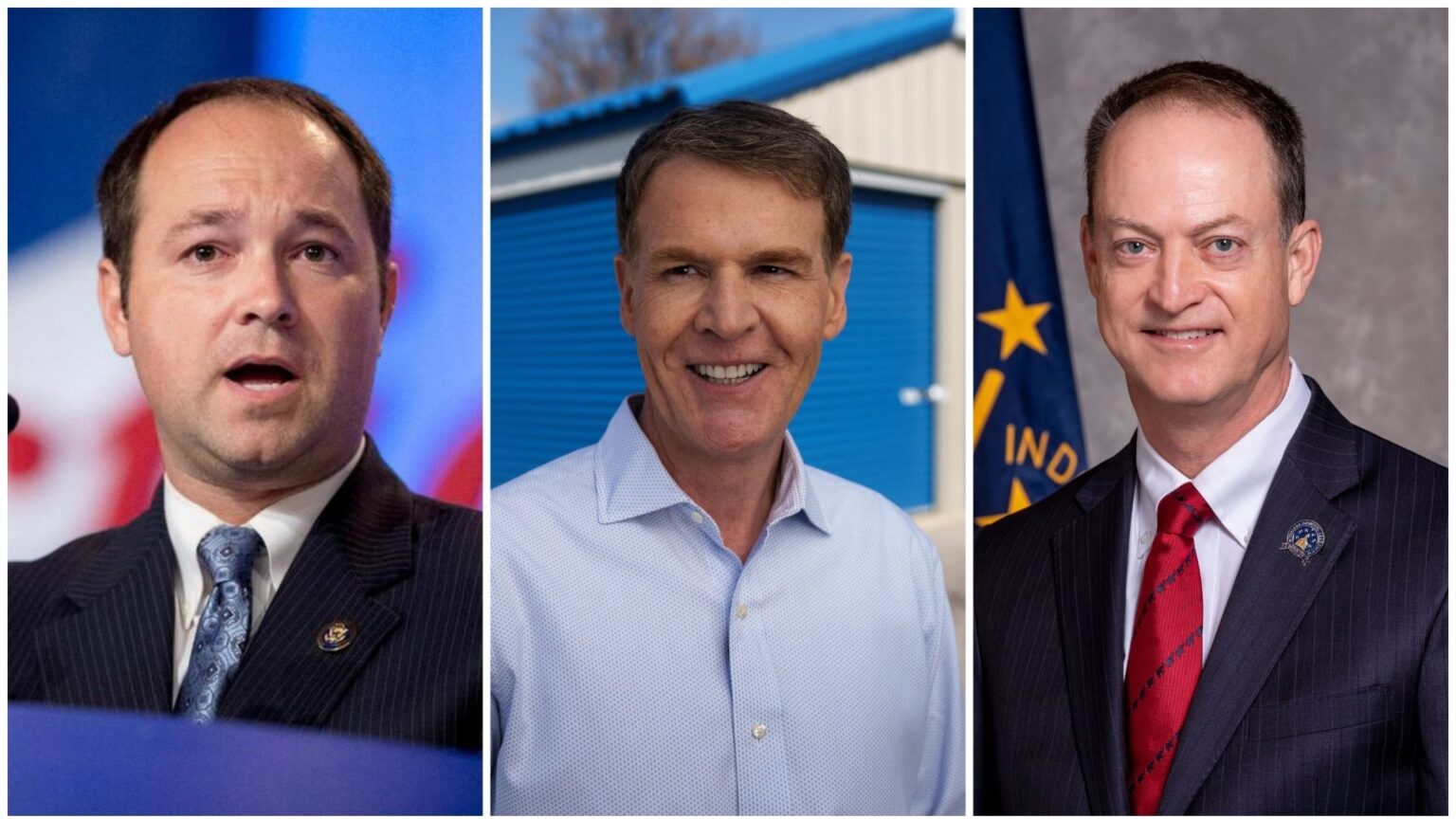Washington, D.C
Washington, D.C. shouldn’t run the nation’s economy

In the popular mind, nearly every American city owes its prominence to one private industry or another: steel barons built Pittsburgh, modern finance defined New York City, San Francisco and Austin have ridden high on technology. The one big city without a defining private industry, of course, is Washington, D.C., home of America’s federal government. That’s why it’s so odd that many on the right are now championing “industrial policy” efforts that would try to transform D.C. into a center of economic innovation.
Indeed, proposals for this heavy level of government engagement in the economy, once considered by many on the right as a crony-capitalist venture favored mostly by Democrats, has become increasingly popular with Republicans ranging from presidential candidate Donald Trump to Florida Sen. Marco Rubio. The sheer size of the federal government – more than a fifth of the economy – means that a totally hands-off attitude towards industry is impossible. But, even if the government can’t stay out of the economy entirely, recent history shows it can still foster innovation without picking winners and losers.
The actions typically thought of as industrial policy have an undeniable allure: nearly all experts consider important certain sectors such as artificial intelligence, energy production and biomedicine. By earmarking resources, changing regulations and imposing tariffs on non-U.S. industries and companies, the thinking goes that D.C. can secure prosperity. This is the fundamental approach taken by the Biden administration’s Inflation Reduction Act subsidies for green energy as well as proposals from Republicans to bolster heavy manufacturing and fossil-fuel production.
But expecting these efforts to work flies in the face of history. Since World War II, nearly every president has picked out a favored industry and tried to slant things in its direction. The Trump administration proposed billions of subsidies and even more costly regulations on competitors intended to benefit coal companies which slumped anyway. Bill Clinton’s administration spent millions on a “supercar” project that angered environmentalists and set back America’s efforts to build hybrid vehicles. Richard Nixon’s Department of Housing and Urban development launched an ambitious effort to change how housing got built and ended up making housing more expensive.
American economic leadership in the 20th century was not the result of a bureaucratically overseen industrial policy. Our nation’s dynamism flows from a broadly supportive government role that involves multi-use infrastructure, limited but important support for science and regulatory certainty.
The government’s role has been most visible in major projects like the interstate highway system and modern internet. While both would not have existed without heavy federal subsidies, neither of these projects was intended to benefit one specific sector. Nobody wanted “leadership” or “jobs” in asphalt or fiber-optic cable production. Instead, the architects of both intended to create accessible scaffolding upon which the private sector could experiment, innovate and scale. Fast-food restaurants probably gained more from the interstate system than roadbuilders.
Similarly, the breakthroughs in technology emerged from regulatory environments where the government’s role was to lay the groundwork – funding basic research, experimenting with a few pilot programs, and then stepping back to allow the private sector to take the lead in development, commercialization and scale. This approach succeeded because it created new knowledge in every field of human endeavor rather than having politicians decide what was important.
Most important, the establishment of limited, efficient regulatory systems that offer clarity and certainty for private enterprises has been critical. Such frameworks enable businesses to plan for the long term, secure in their understanding of the rules of the game. Right now, the American tort law system punishes entrepreneurs and burdensome regulations favor slow-moving incumbent companies. Furthermore, many legacy regulations are ill-suited to the characteristics of new technologies.
For example, the foremost challenge faced by green industries is regulatory burdens, whereas most green subsidies in the Inflation Reduction Act constitute corporate welfare. Comprehensive reforms to outmoded power-industry regulation and
As policymakers grapple with the best path forward, it is imperative to remember that the strength of the U.S. economy lies in freedom, diversity and innovation. Principles that emphasize a limited government role could pave the way for a new era of American leadership in the global economy in a way that picking winners and losers never has. It is a no-brainer that Washington, D.C. shouldn’t run the economy.
Eli Lehrer is president of the R Street Institute.

Washington, D.C
2 shootings in Northeast DC leave 3, including teen boy, hurt – WTOP News

Three people were injured Saturday afternoon in Northeast D.C. in two separate shootings.
Three people were injured Saturday afternoon in Northeast D.C. in two separate shootings.
D.C. police were first called around 1:20 p.m. to the 3600 block of Hayes St. NE.
Officers found two men when they arrived. Both were suffering from gunshot wounds. The men were taken to area hospitals, conscious and breathing.
Police were then called about another shooting around 3:40 p.m.
When officers arrived at the 1200 block of 47th Place NE, they found a 14-year-old boy with a gunshot wound.
He was conscious and breathing when he was taken to the hospital.
Police do not have a suspect in custody for either case.
The investigations are ongoing.
Get breaking news and daily headlines delivered to your email inbox by signing up here.
© 2024 WTOP. All Rights Reserved. This website is not intended for users located within the European Economic Area.
Washington, D.C
A brilliant afternoon in D.C. on Saturday was bookended by clouds

Friday’s clouds lingered late, and may have hidden the Northern Lights from the D.C. area, but Saturday afternoon was bright and airplane wingtips sparkled in the sunshine during an aircraft flyby.
Mid-May weather in Washington possesses such potential for pleasure that even Saturday’s cooler-than-average temperatures seemed warm and welcoming, especially given the strength of mid-May sunshine.
Washington, D.C
Northern lights forecast for DC, MD, VA: Will we see the aurora again Saturday?

Virginia sees rare glimpse of Northern Lights
The aurora borealis was visible from higher elevation in parts of Virginia Thursday night.
WASHINGTON – The northern lights are visible to millions in the U.S. this weekend – including some near the Washington, D.C., Maryland, and Virginia regions.
Several individuals across the region said they witnessed purple and green skies early Saturday morning.
The National Oceanic and Atmospheric Administration issued a rare Severe (G4) Geomagnetic Storm Watch beginning Friday and lasting all weekend. It was later upgraded to an Extreme (G5) Geomagnetic Storm as it reached Earth. The watch was the first of its kind issued in nearly 20 years.
The effects of the storm were expected to possibly disrupt power stations, electrical lines, state spacecraft operations and various areas of communication. It poses a risk for high-voltage transmission lines for power grids. So far, according to the Associated Press, there have been no immediate reports of disruptions to power and communications.
Could we see the aurora again Saturday?:
FOX 5’s Gwen Tolbart says as far as seeing the lights in the Washington, D.C., Maryland, and Virginia areas, we are expecting clouds, rain and possibly a rumble of thunder early this evening.
After the clouds and rain clear out, we could have a chance of seeing something, but it would more than likely be early Sunday morning, but all depending on how much clearing we actually get. It seems more likely towards the Pennsylvania and Maryland border, according to NOAA’s forecast for tonight and tomorrow.
The D.C., Maryland and Virginia Metro areas now have 73% – 67% cloud coverage forecast from 11 p.m. to 2 a.m., more than 60% from 3 a.m. – 4 a.m., and an average of 56% to 57% from 5 a.m. to 6 a.m. All of these periods also have the chance of some showers.
NOAA suggests if the skies are clear, use the camera on your cell phone, as the newer cameras are more sensitive and able to capture more than the naked eye.
Northern lights forecast:
According to NOAA, a large sunspot cluster has produced several moderate to strong solar flares since Wednesday. NOAA says the extreme geomagnetic storm continues and will remain in effect through at least Sunday.
There is currently a threat of additional strong flares and CMEs will remain until the large and magnetically complex sunspot cluster rotates out of view, according to NOAA.
FOX 5’s Tucker Barnes says their forecast, in addition to the likelihood of rain and clouds in the area through the weekend, will lower the chances of seeing the northern lights in our region.
The Associated Press contributed to this report.
-

 Education1 week ago
Education1 week agoVideo: President Biden Addresses Campus Protests
-

 News1 week ago
News1 week agoSome Florida boaters seen on video dumping trash into ocean have been identified, officials say
-

 World1 week ago
World1 week agoUN, EU, US urge Georgia to halt ‘foreign agents’ bill as protests grow
-

 World1 week ago
World1 week agoEuropean elections: What do voters want? What have candidates pledged?
-

 Movie Reviews1 week ago
Movie Reviews1 week agoSabari Movie Review: Varalaxmi Proves She Can Do Female Centric Roles
-

 News1 week ago
News1 week agoWhistleblower Joshua Dean, who raised concerns about Boeing jets, dies at 45
-

 Politics1 week ago
Politics1 week agoAustralian lawmakers send letter urging Biden to drop case against Julian Assange on World Press Freedom Day
-

 World1 week ago
World1 week agoBrussels, my love? Champage cracked open to celebrate the Big Bang




















